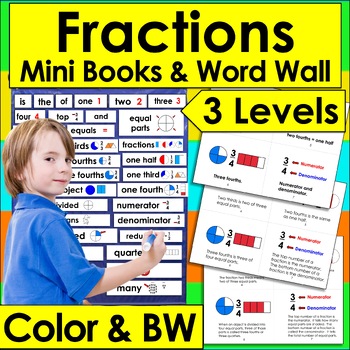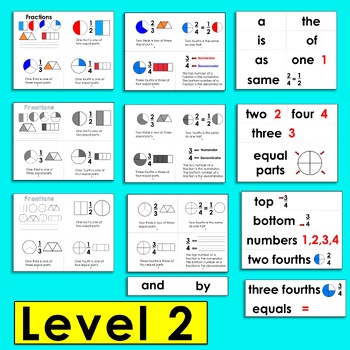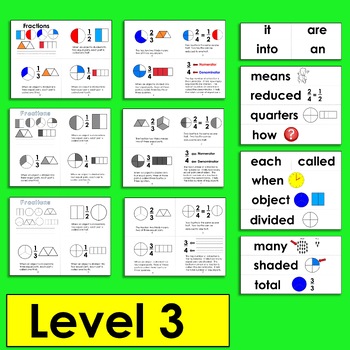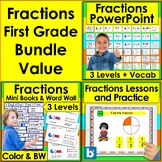Fractions Mini Books Mini Worksheets First Grade 3 Levels Illustrated Word Wall
- PDF
Also included in
- Introducing our Fraction Introduction Bundle of first grade fraction products, designed to make learning fractions engaging, interactive, ❤️ and fun for young learners. This bundle includes three amazing products that cater to different learning styles and preferences, ensuring that every student haPrice $5.25Original Price $10.50Save $5.25
Description
First grade students will enjoy these differentiated fraction mini books with mini worksheets inside as you introduce or review fractions.
❤️ Differentiate with 3 Different Reading Levels. Use with or without my Fractions PowerPoint complete with animate vocabulary slides and click and drag slides to shade shapes. It allows you to guide students through all of the 3 levels.
✅ PLUS Illustrated Fractions Vocabulary Cards for an illustrated Fractions Math Word Wall or Pocket Chart included.
8 Pages Per Book (cover and 7 pages)
Level 1: “Fractions” is the easiest level.
Words with Picture Clues: fractions, one half, one third, one fourth, two thirds, two fourths, three fourths, equals, numerator, denominator
Level 2: “Fractions” is a version that is a bit harder, more sight words, picture clues, and longer sentences.
Sight Words: a, the is, of, as, one, same, one, two, three, four
Other Words: equal parts, top, bottom, numbers, two fourths, three fourths
Level 3: Fractions” has more sight words with picture clues for the other vocabulary words:
Sight Words: it, are, into, an, each, called, when how, many
Words with Picture Clues: object, divided, means, reduced, quarters, shaded, total
✅ 3 versions of each fractions book
Easy Assembly - Choices:
Version 1 of each level: High frequency words and full color illustrations help younger learners to use their reading strategies: pictures, phonics and context.
Version 2 of each level: Same text, but black and white illustrations for students to read and color.
Version 3 of each level: Same text but students show their comprehension and understanding by shading fractions and identifying the numerator and denominator.
COMMON CORE STANDARDS
CCSS.MATH.CONTENT.1.G.A.3
Partition circles and rectangles into two and four equal shares, describe the shares using the words halves, fourths, and quarters, and use the phrases half of, fourth of, and quarter of. Describe the whole as two of, or four of the shares. Understand for these examples that decomposing into more equal shares creates smaller shares.
RF.K.4
Read emergent-reader texts with purpose and understanding.
RF.1.4
Read with sufficient accuracy and fluency to support comprehension.
RF.1.4a
Read grade-level text with purpose and understanding
RF.1.4b
Read grade-level text orally with accuracy, appropriate rate, and expression on successive readings.
RF.K.3
Know and apply grade-level phonics and word analysis skills in decoding words.






